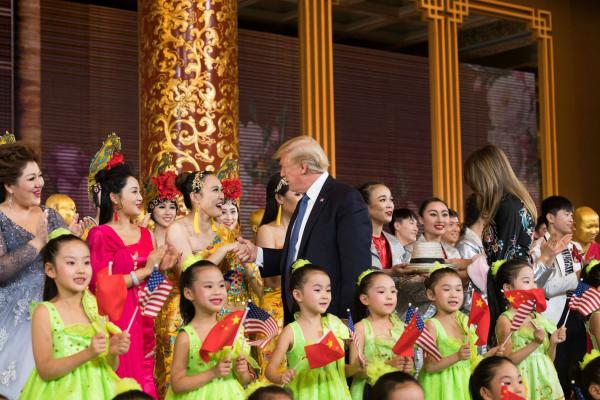America’s Unions No Longer Speak for the Workers
(China) on 15 November 2017
by Zhang Wenzong (link to original)
American unions are a product of the American workers’ movement at the end of the 19th century and beginning of the 20th century. The still active AFL-CIO, United Steelworkers, United Automobile Workers, and other unions all had great positive impact when they first began. By using measures such as organizing strikes, group negotiations, and lobbying the government, unions have been instrumental in protecting workers’ rights, such as increasing workers’ income, reducing work hours, and improving work environments.
Starting in the 1960s to the present day, American unions have shown some new trends. First, the percentage and number of union members have dropped drastically. While the American population has surged, union members have dropped from 17.7 million in 1983 to 14.6 million in 2016. The ratio of union members in the labor force has also dropped from 39 percent in 1955 to 10.7 percent in 2016, with only 6.4 percent of employees in private sectors belonging to unions.
Second, American unions have continued to merge and expand. For example, in order to meet new trends in economic and social development, United Steelworkers changed from just a union of steelworkers to a central union with workers in industries including steel, paper, forestry, rubber, manufacturing, energy, biochemicals and more, and actively sought to merge with unions in Canada, England and the Caribbean in order to promote “a globalization of the labor movement.”
After a long-term evolution, American unions have mutated; they have become enormous and influential interest groups, and their negative influence on America cannot be underestimated.
First of all, private sector unions have decreased American companies’ competitiveness, which is particularly noticeable in America’s “Rust Belt.” America’s Midwest used to be the heart of heavy industry before World War II, but began to decline after it turned into the Rust Belt, which was caused by the region’s powerful unions. These unions held a powerful stance on protecting member salaries and benefits, forcing businesses into not using advanced technologies to improve labor productivity and thus suffering increased labor costs. Overwhelmed, the businesses were forced to vote with their feet; they moved their operations to the American Southeast, the American South, or even overseas, where the unions were weaker, and the labor costs were lower, causing a lack of protection for the now unemployed workers.
Second, public sector unions have accelerated the American government’s debt. Unlike private sector unions, America’s civil employees, public school teachers, firefighters, police and other public employees belong to unions at a rate of as high as 35 percent. These unions are used to seeking all types of benefits for their members during labor negotiations. The management at public sector companies tends to give way during labor negotiations because it is not as invested in the organization’s profit. In addition, the unions use votes and campaigns as a giveaway to influence candidates seeking public office, forcing them to promise the protection of union benefits, to expand government spending, and to deliver on these promises after being elected. The out-of-control spending and ballooning debt in the American government is certainly related to this tendency.
Third, systemic problems and corruption at American unions means that these unions cannot speak for the majority. In “Solidarity for Sale: How Corruption Destroyed the Labor Movement and Undermined America's Promise,” author Robert Fitch analyzed the dark side of American unions. He pointed out how, within the federation of various American unions, there are more than 20,000 local unions whose budgets and actions are relatively independent. Many local unions’ predecessors were professional guilds and related to organized crime. From the start, such unions used extortion, blackmailed businesses, accepted bribes from business owners, had infighting, sold job opportunities, were controlled by gangs, embezzled membership dues, etc. Compared to unions in European countries, American unions also liked to push out immigrants and non-skilled workers, discriminate against African-Americans and women, and were used to fracture workers’ movements by colluding with businesses. It could be said that, in American society, where free competition is emphasized, the unions’ overall image is not great, and they fall short of representing the workers.
The author is director of the Political Research Office at the Institute of American Studies of the China Institutes of Contemporary International Relations.



Given the union busting that has happened in North America, especially the US, we ought to be surprised that there’s anything left that calls itself a union. I guess these leftovers are in pure survival mode.